Tel.: +7(495) 935-81-86 | Е-mail: ale@aqualogo.ru
EXPOSITION OF THE OCEANARIUM IN ENTERTAINMENT CENTER “RIO”
The exhibition conception of Aqua Logo Engineering in Moscow and Voronezh oceanariums involves a demonstration
of land animals – mammals, birds, reptiles – along with traditional for public aquariums hydrobionts. The aviaries
and terrariums with animals, living in different parts of our planet, make exposition more diverse, allow visitors
to more clearly visualize the natural biotopes in which the inhabitants of land and water live together. We plan to
integrate there great scientific and enlightening work in the future. Voronezh oceanarium has separate lection room
for this aim.
Both oceanariums are united by the idea of zoning expositions over climatically
similar conditions of animals’ life. The exposition of the oceanarium in entertainment center “RIO” includes 9 zones.
Let’s take a walk over the oceanarium with other visitors.
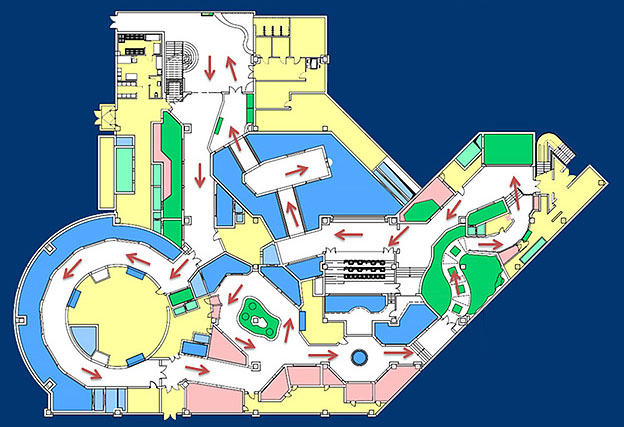
From the first stage of the entertainment center “RIO” we can get to the oceanarium
three ways: by the beautifully decorated staircase, by the escalator, going just to the cash desks, and from the
underground parking. The entry to the oceanarium hall is decorated as an underwater cave, guarded by ancient
warriors.





In the oceanarium hall there is decorative rack for souvenirs sale, additionally
decorated with cascade waterfall. Nearby the waterfall “Atlant” stands. Further visitors walk into paid zone of the
oceanarium, where they can learn the scheme of exposition and survey route.





In the first exposition “Polar zone” with are 82 m2 visitors are welcomed by Humboldt
penguins in the aviary, decorated as an iceberg. These decorations don’t fit with natural area of inhabitance of this
specie, but are adequate to the expectations of visitors. The area of this aviary is 27,2 m2, the volume of fresh
water is 30 m3. In the “Polar zone” there are two more aquariums – with salmonids and sturgeons (with volume of 13
m3) and with red king crabs (with volume of 23 m3). The further plan of the oceanarium is creation of aquariums with
octopuses, jellyfishes and nautiluses. The whole exposition is completed with a figure of the mammoth, stacked in the
iced rock, which has already become favorite place of visitors for taking pictures.
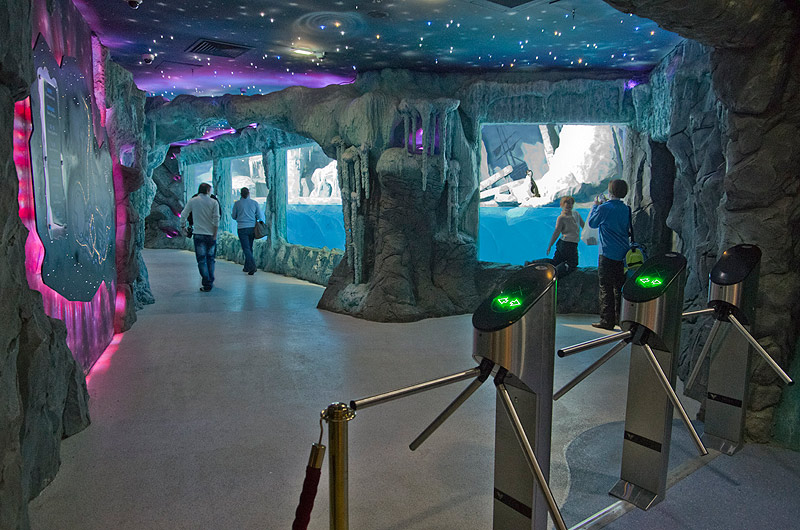




The next exposition hall represents the underwater world of the tropical lagoon.
Exposition zone "Laguna" has an area of 169 m2. This room is darker than the previous one. Reception of a
contrast transition from the zone to the zone is present throughout the exposition and supports the interest of
visitors. In this hall the movement of the human stream takes place in a circle, along the outer contour of which
there is an arc-shaped marine aquarium with a volume of 225 m3.
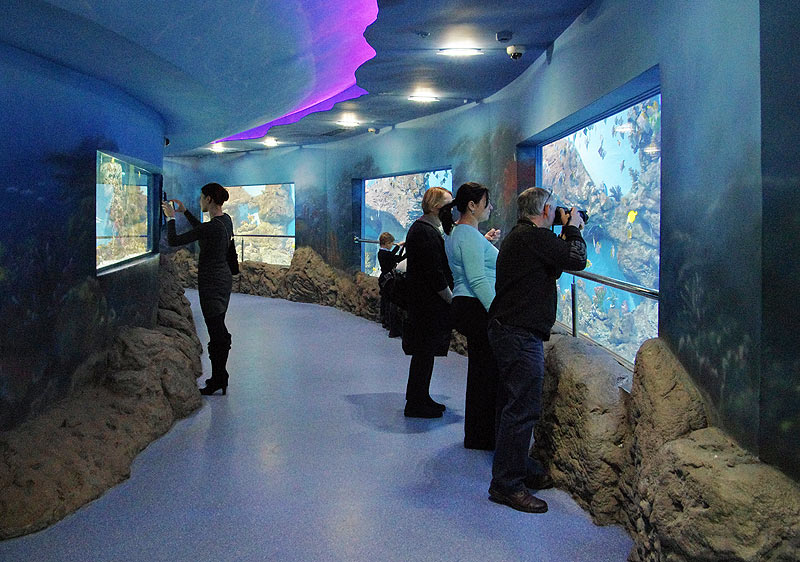
The population of "Lagoon" is a bright and diverse reef fish, guitarfishes
and other stingrays, bottom sharks. The interior of the room is made in the form of a corner of the underwater world.
This effect is achieved by painting the walls, floor and ceiling as the world of sea depths. There are also three
marine all-glass aquariums with a volume of 2.6 m3 with tropical marine fishes (boxfishes, scorpionfishes and
surgeonfishes), freshwater aquarium with a volume of 9 m3 with cichlids from the Lake Malawi and two dry dioramas.
The “Lagoon” zone ends with marine aquarium with a volume of 10 m3 with clownfishes and sea anemones.
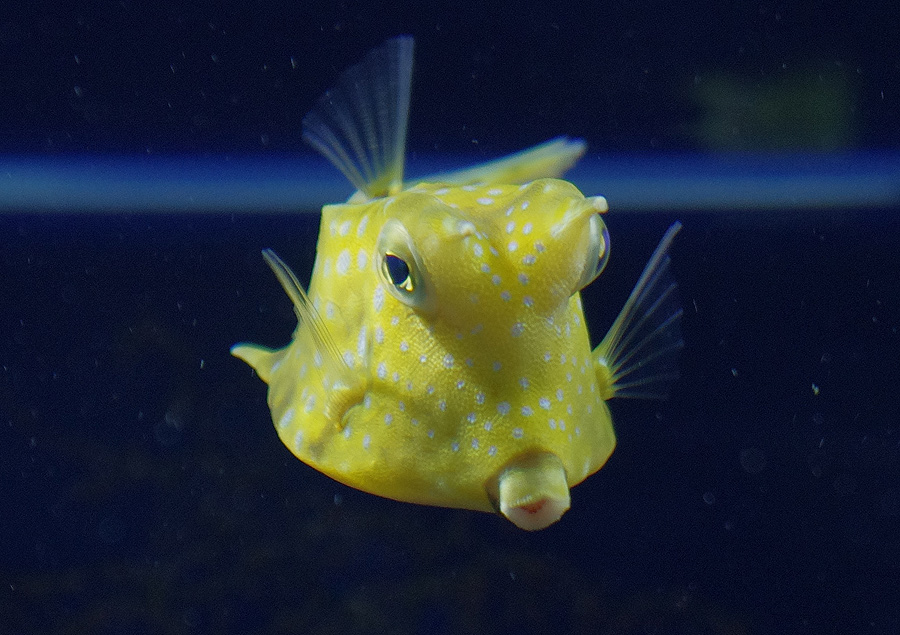
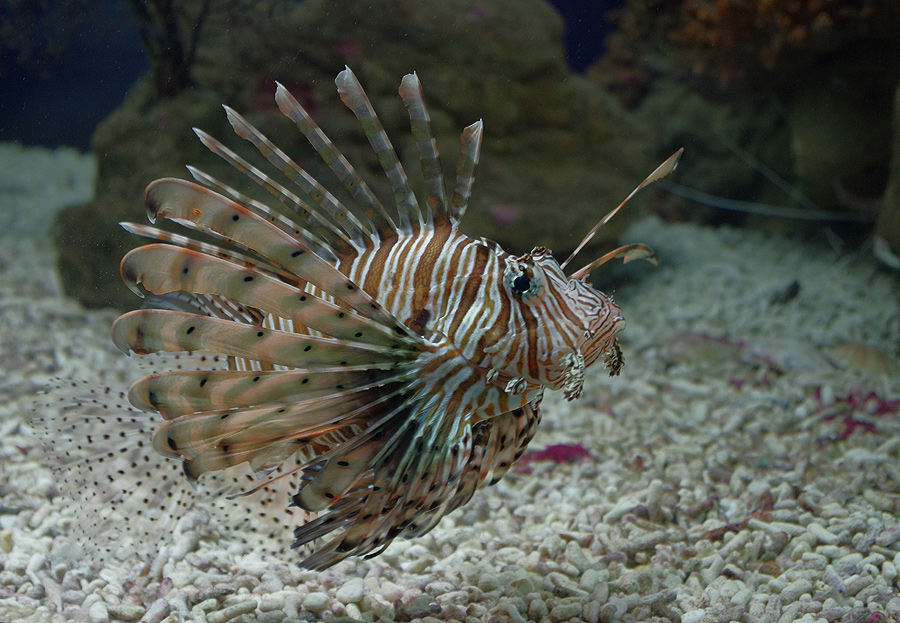
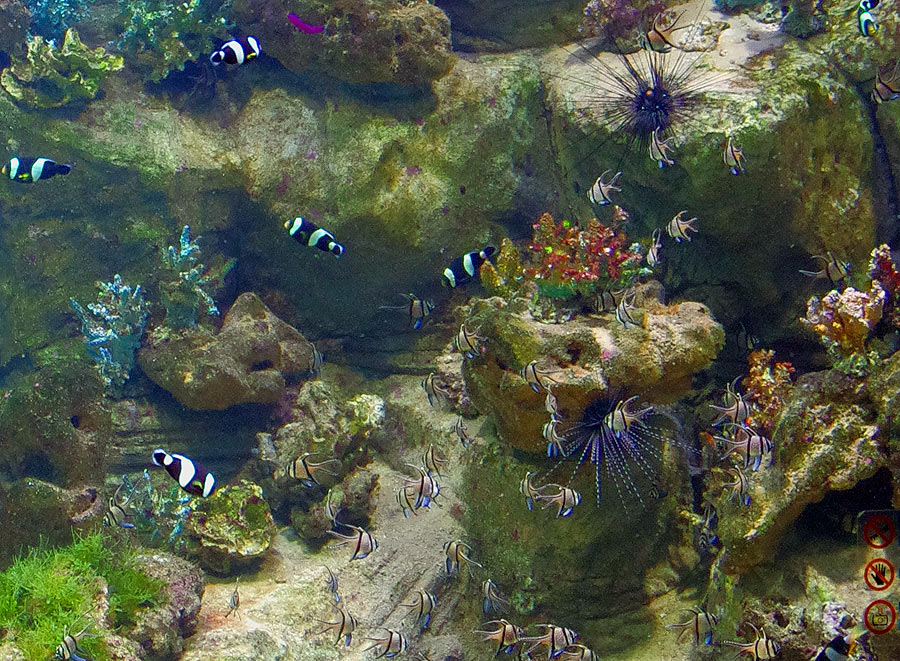
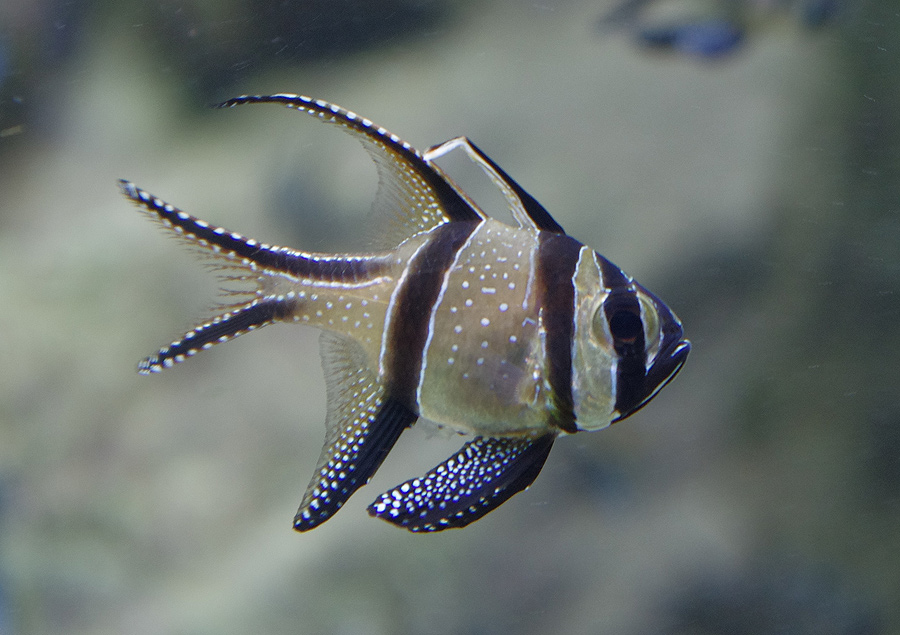
Then visitors get to the zone №3 "Jungles" with paintings on the walls,
banyan trees, living and artificial vegetation. The ceiling in the form of a starry sky with artistic painting is
highlighted by hundreds of LED lamps. There are two open reservoirs in the hall. A freshwater reservoir volume of 5
m3, located in the center of the hall, is surrounded by a low border in the form of a rocky shore. In the center of
the reservoir on a stony island there is a tree, covered with powerful lianas. This decoration masks the supporting
pillar of the building. In this reservoir an interesting exposition technology is used - its area contains open
transparent spheres filled with water. Being fed with floating food, carp koi swim inside the spheres coming above
the level of open water in the pool, which creates an unusual visual effect. Nearby is the largest in Russia marine
aquarium "Coral reef" with a volume of 32 m3 with live corals and an all-glass aquarium (1.67 m3) with
deep-sea anglers and a small bull shark.
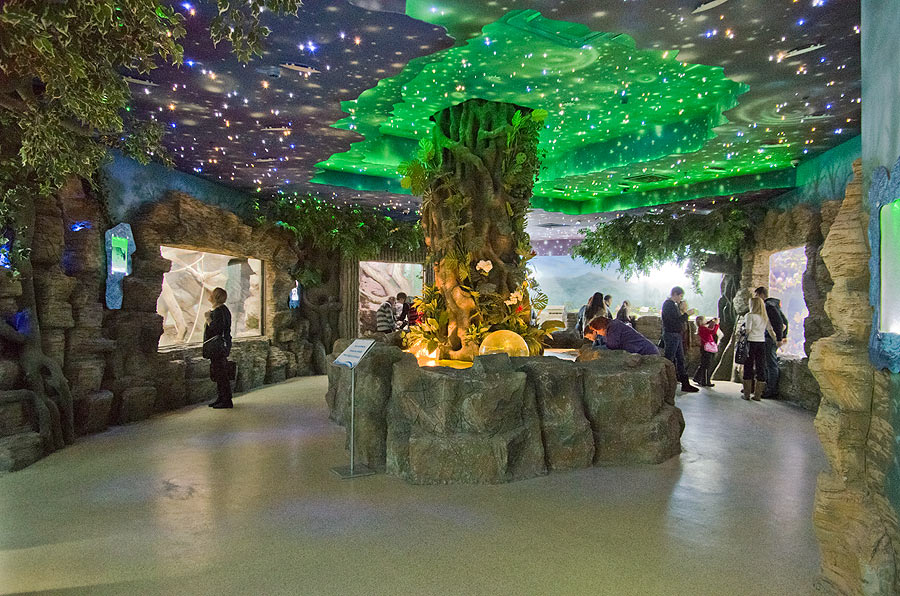
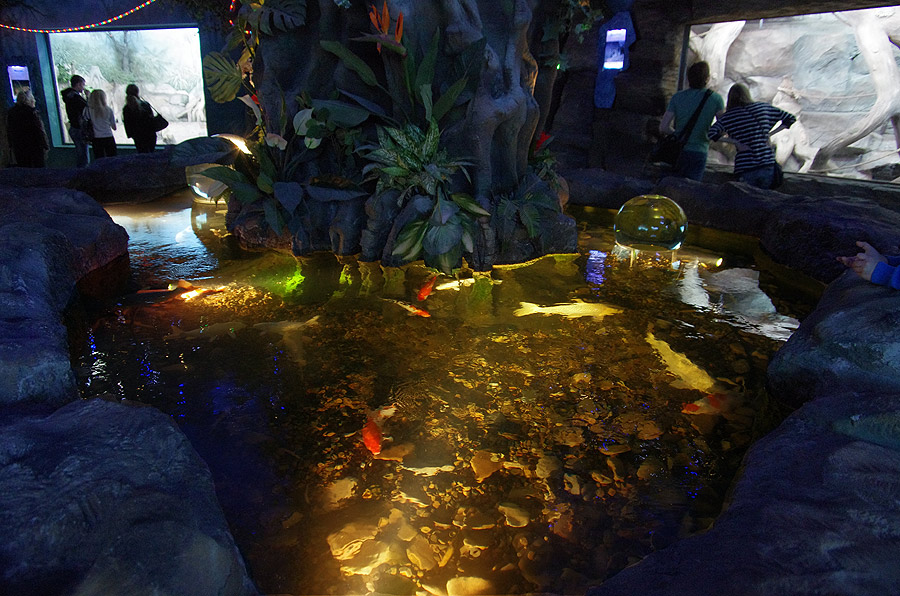
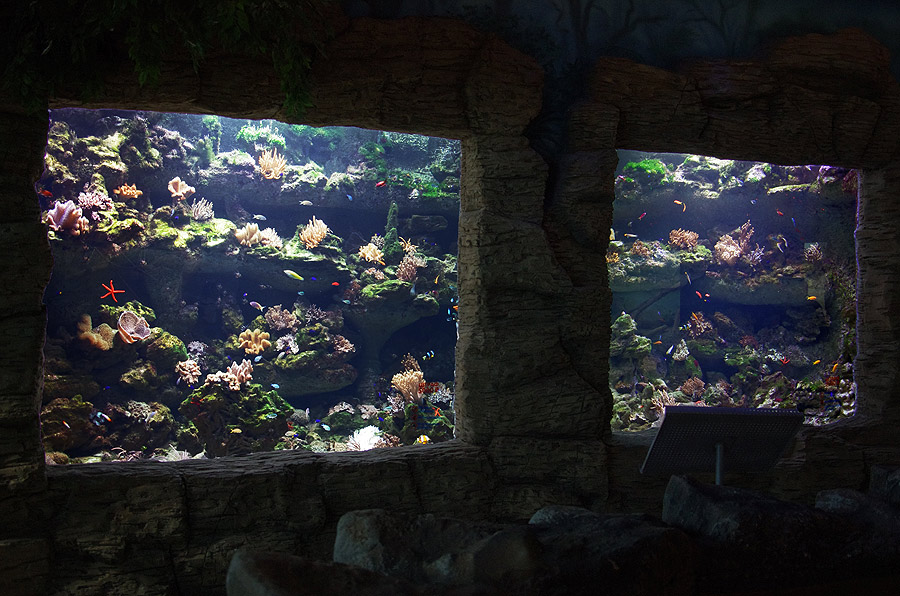
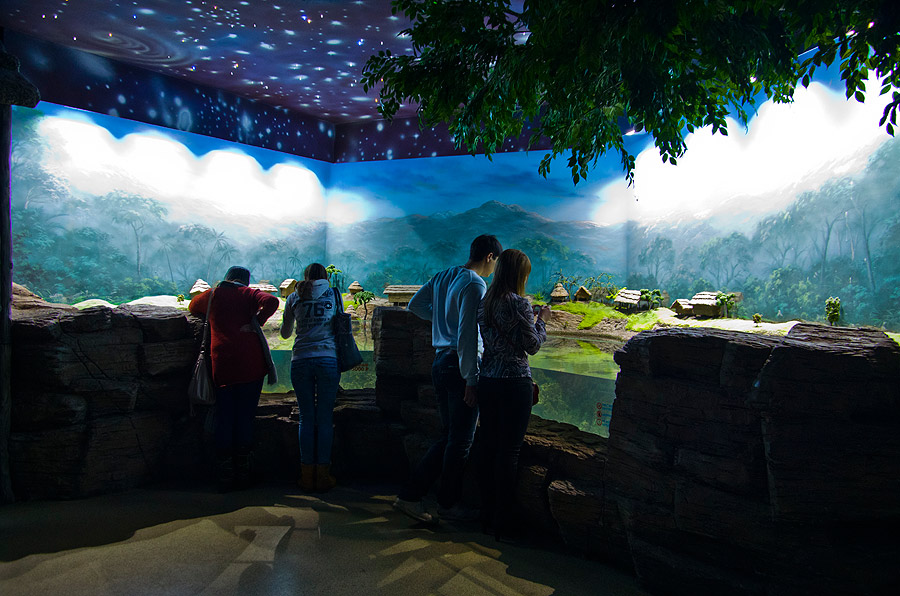
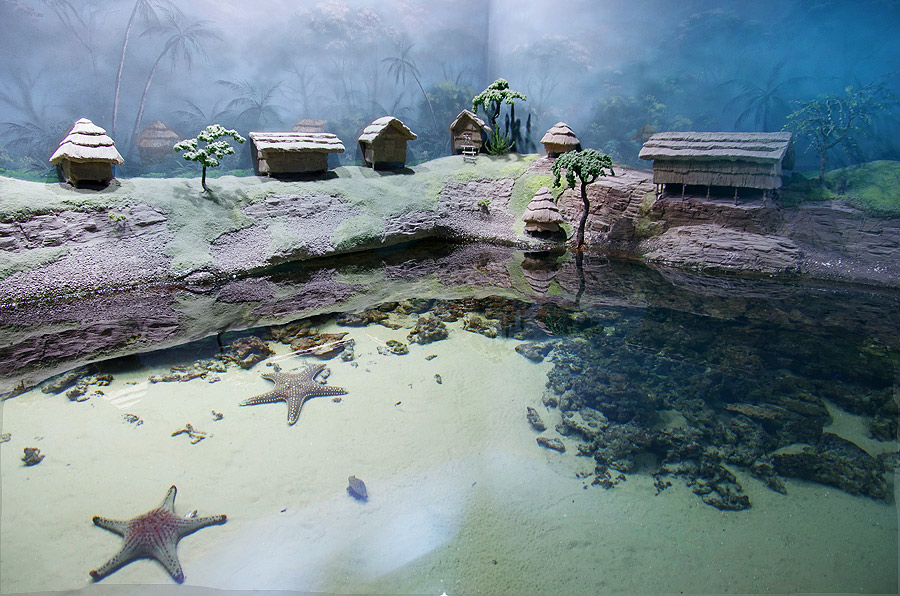
The second pool with volume of 15 m3 is full of sea water. Its inhabitants are bottom
stingrays and carpet sharks from Australia. The shore of the pool is decorates as a village on a rocky shore of the
Pacific atoll. The painting on the wall continues this composition. The “Jungles” zone also includes 9 aviaries and a
terrarium with common area of 85,1 m2. The population of aviaries is various: raccoons, coatis, vulturine
guineafowls, silver pheasant, birds-of-paradise, tauraco, lories, yellow anaconda, Indian python, red-footed
tortoises, white-nosed and green monkeys, tamarins and Salvadori's monitor. The population of the aviaries is not
final, it will be adjusted and replenished.
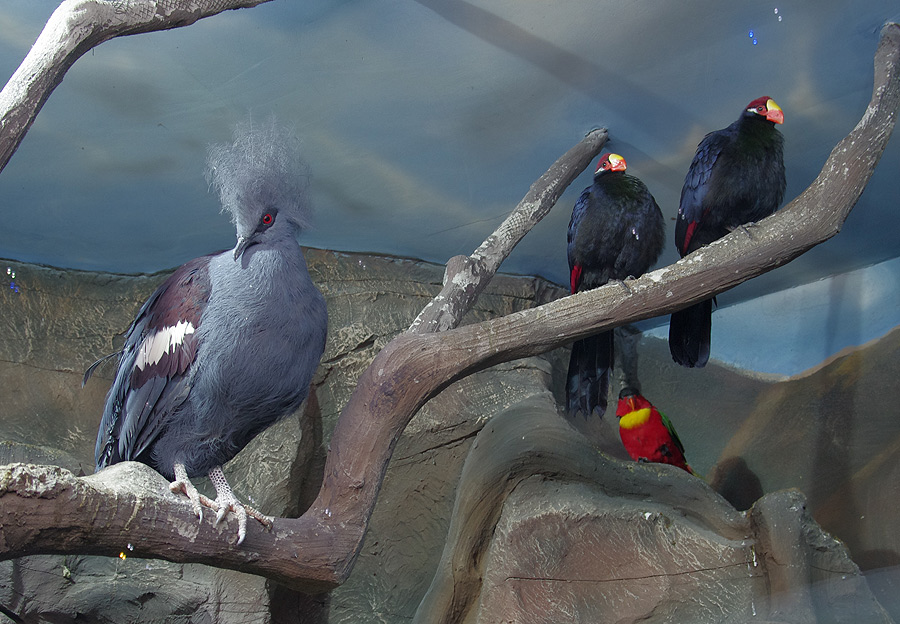

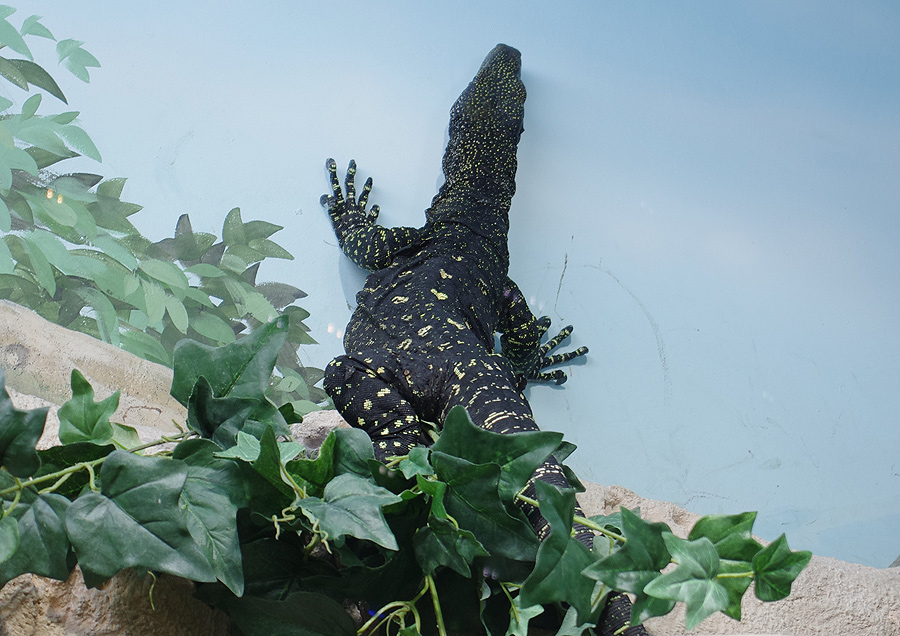

The “Jungles” zone ends with the marine cylindrical aquarium with volume of 5 m3 with
schooling tropical fish (pompanos, caranx) and snowflake morays. Then visitors come to the fourth exposition zone
”Seals”, which contains an aviary with north fur seals and a hall for shows. The whole volume of sea water here is 64
m3.
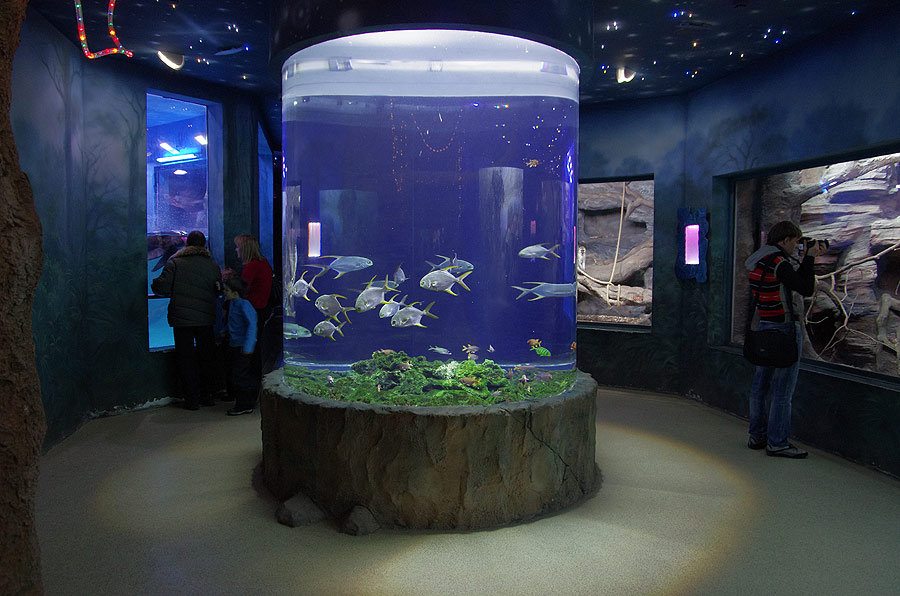
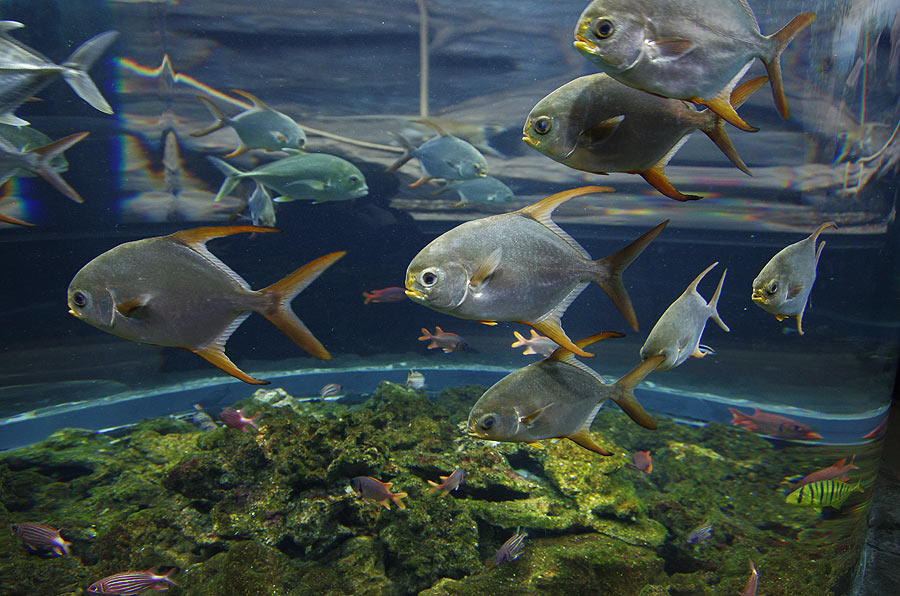
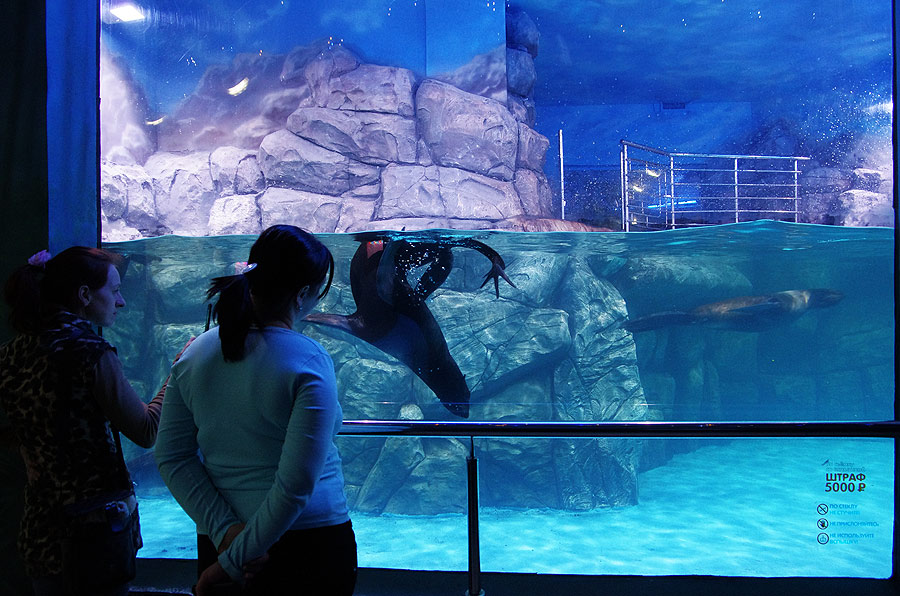
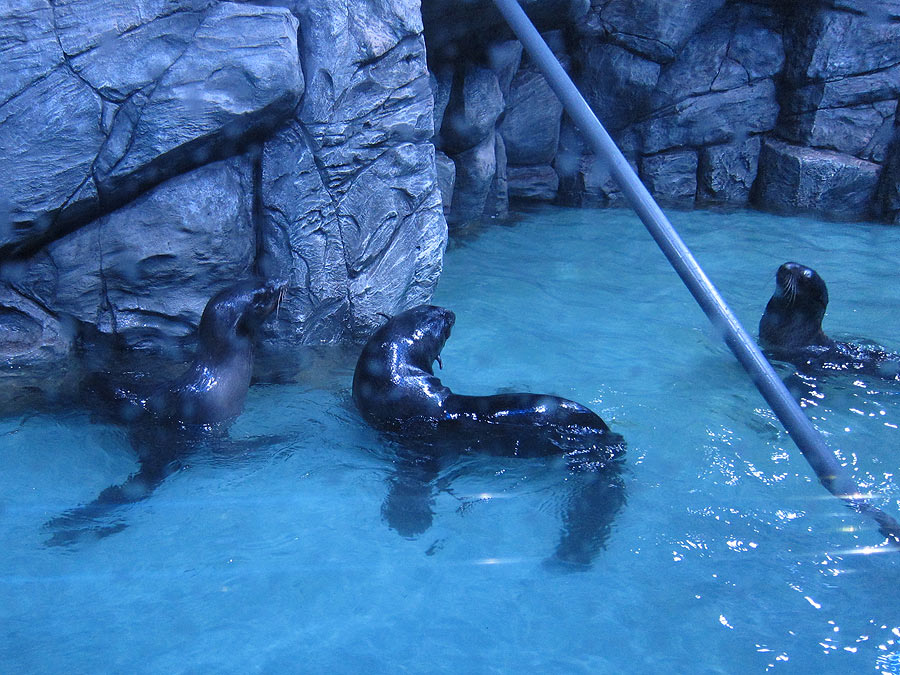

The fifth exposition zone “Amazon” welcomes visitors with open freshwater pool with
volume of 54 m3 with inhabitants of Amazon – stingrays and catfishes. This is the largest hall and it is decorated
with ethnic paintings and bas-reliefs, banyans, waterfalls and a great amount of plants. Going along the small
bridge, visitors step on the glass parts and can see fishes, swimming under the legs. On the right side there is a
sheer rock, covered with plants, and a waterfall. The dynamical colorful underwater lightning reinforces the
impression of the exposition. The “Amazon” zone ends with an aquaterrarium with caimans (10 m3), an aquarium with
piranhas (20 m3) and an aquarium, developed especially for arowanas and arapaimas (60 m3). In this aquarium arapaimas
adjoin with arowanas, oscars and pacu.


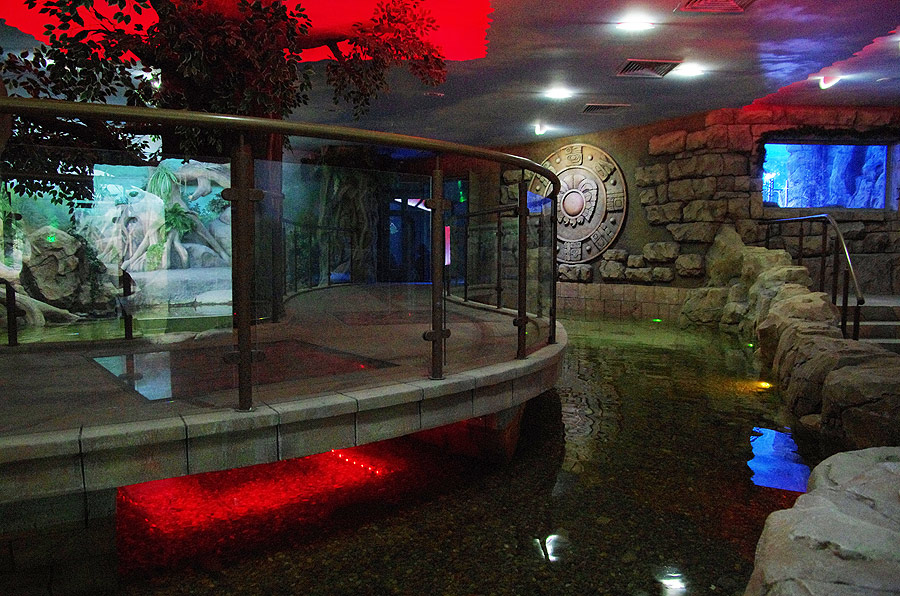
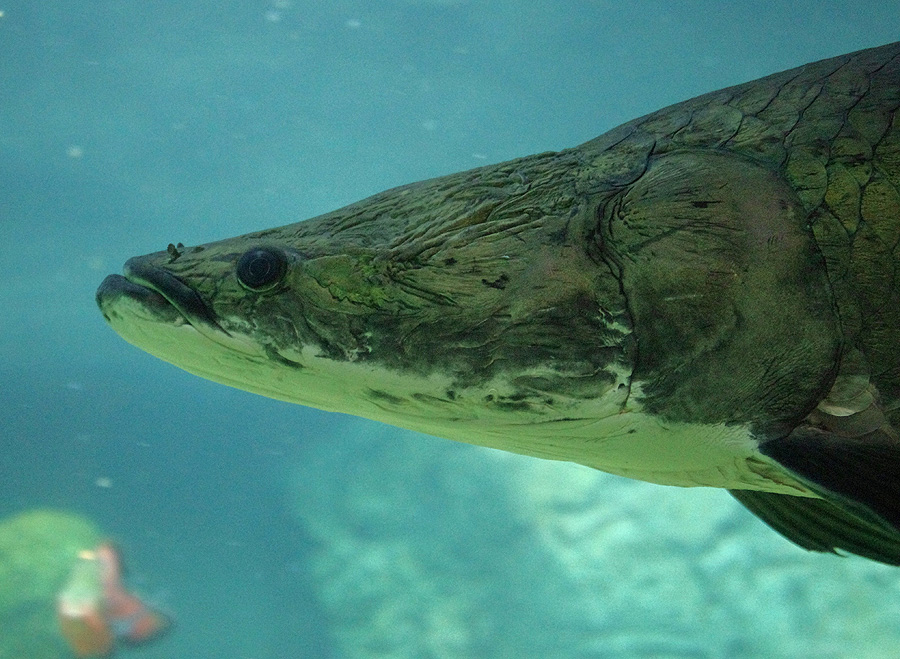
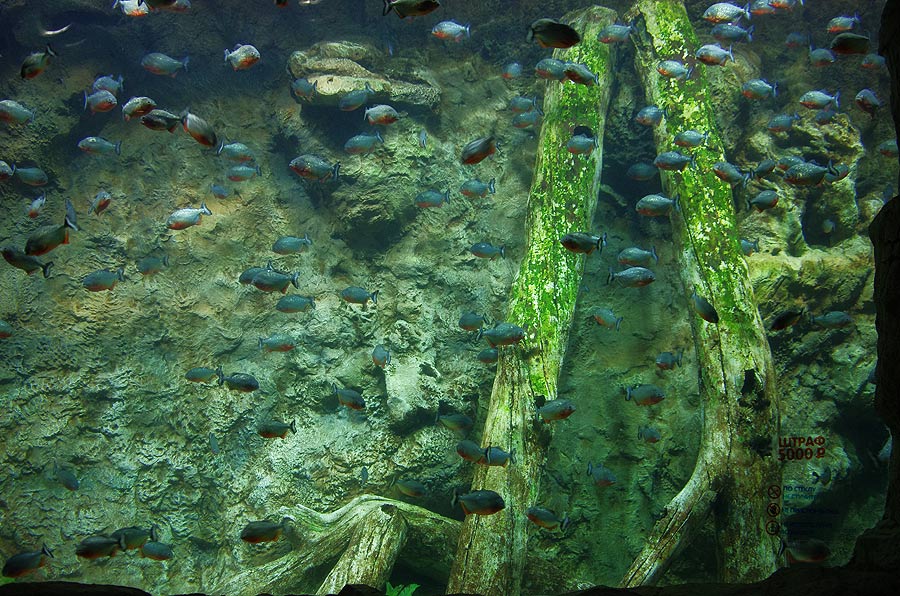
The next exposition zone is the sixth one, “Cave”. In the shadows of the rocky aisle,
surrounded by stalactites and stalagmites, there are 4 aviaries: with flying foxes (Egyptian rousette), gecko,
chameleons and wooden green python, and also there is an aquarium with blind fishes. On the ceiling of the cave there
is a figured highlight with silhouettes of spiders and pirate symbols.
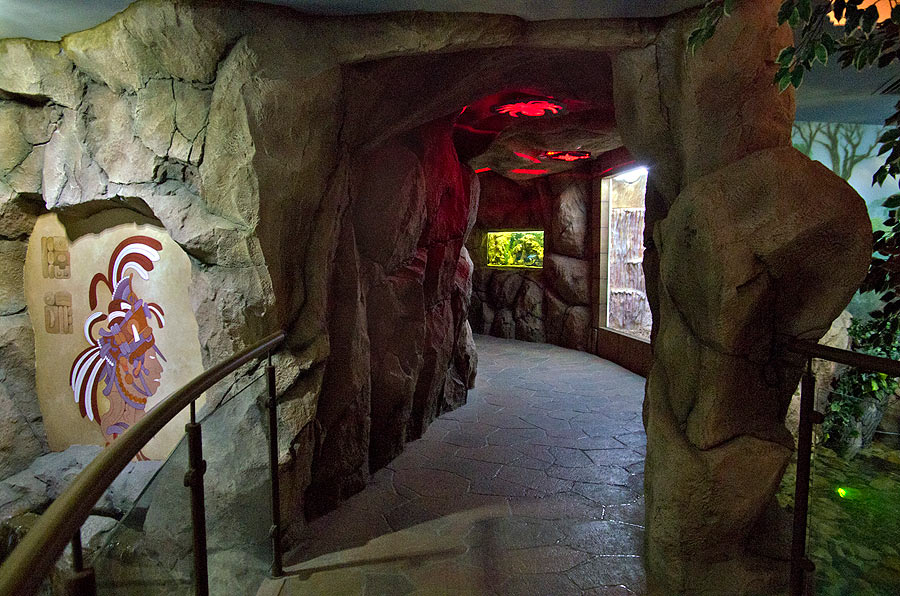
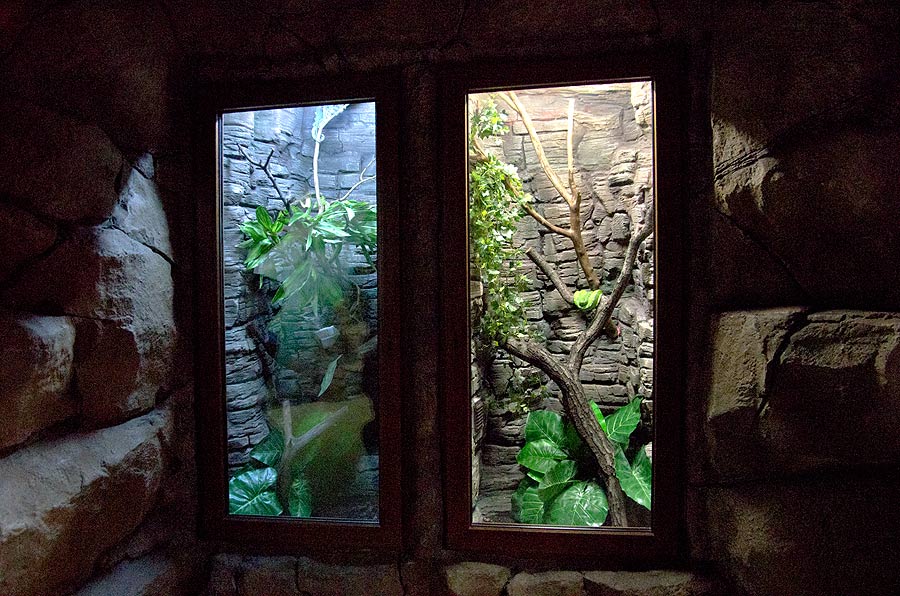


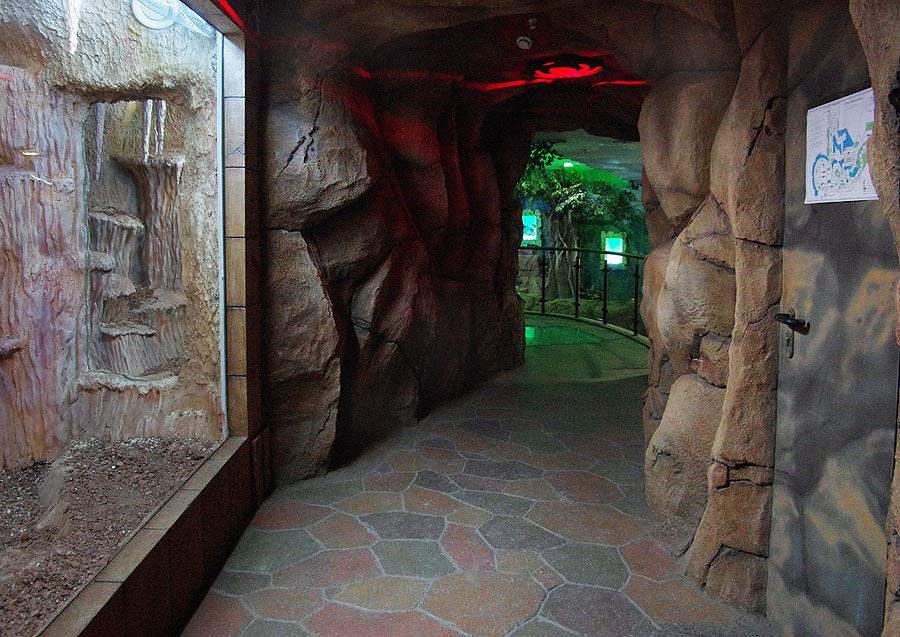
Further visitors enter the hall №7 "Ocean". Here is the largest in the
oceanarium sea tank (as it is commonly called the largest aquariums) with two transparent tunnels. The volume of the
tank is 412 m3. Its inhabitants (more than 40 species), among which sharks, stingrays and groupers, can be seen
through 5 flat acrylic windows of different sizes, from a hemisphere (blister) and from transparent underwater
tunnels.
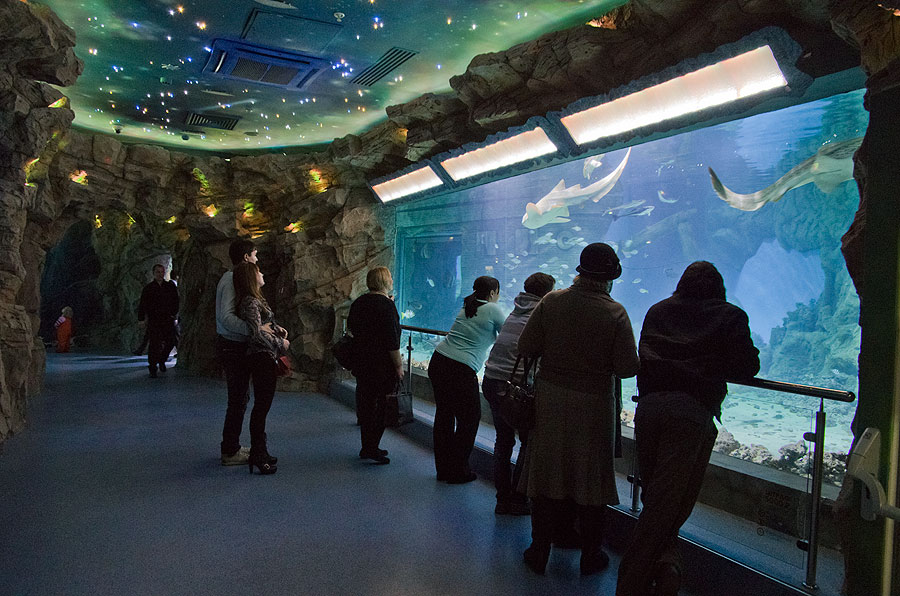
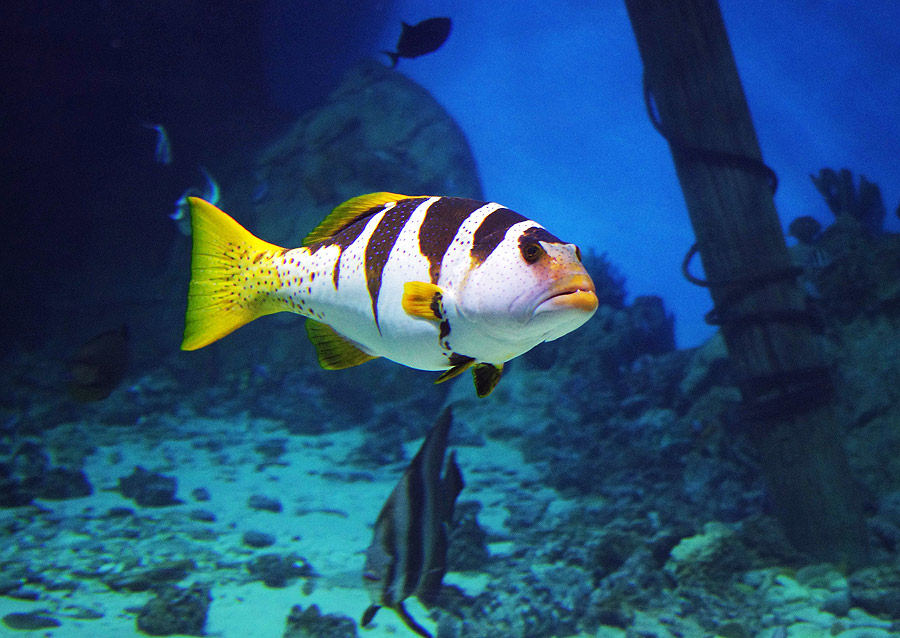
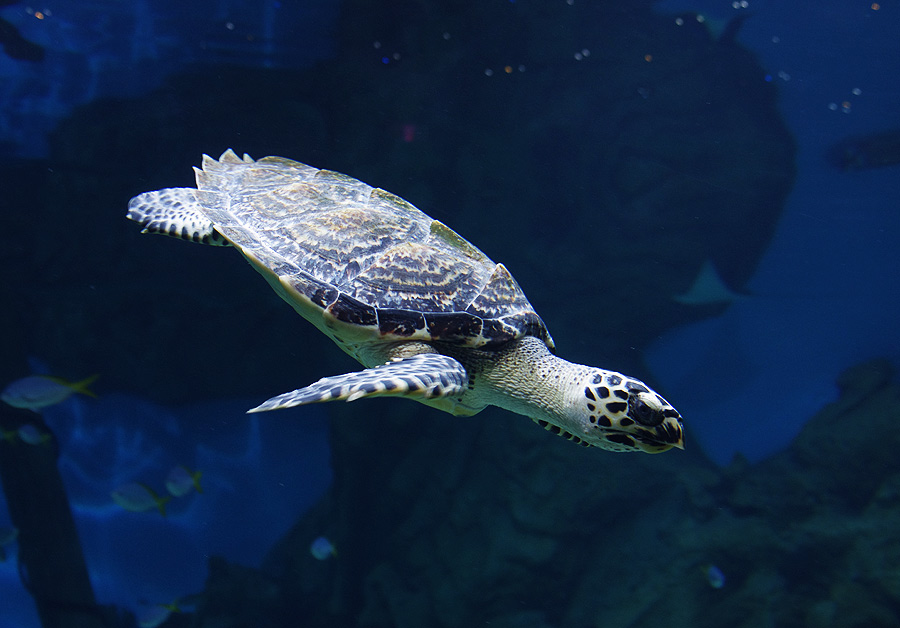
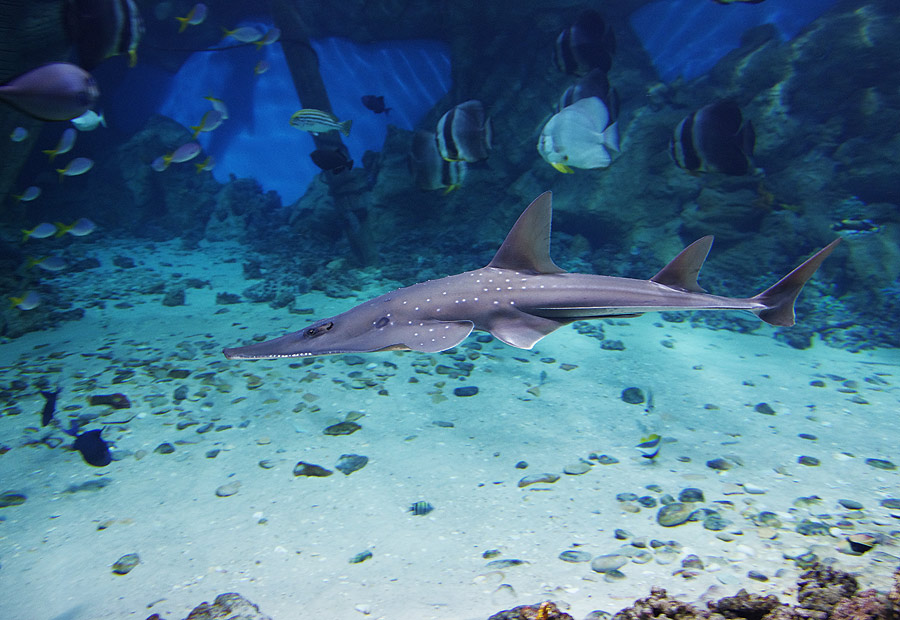
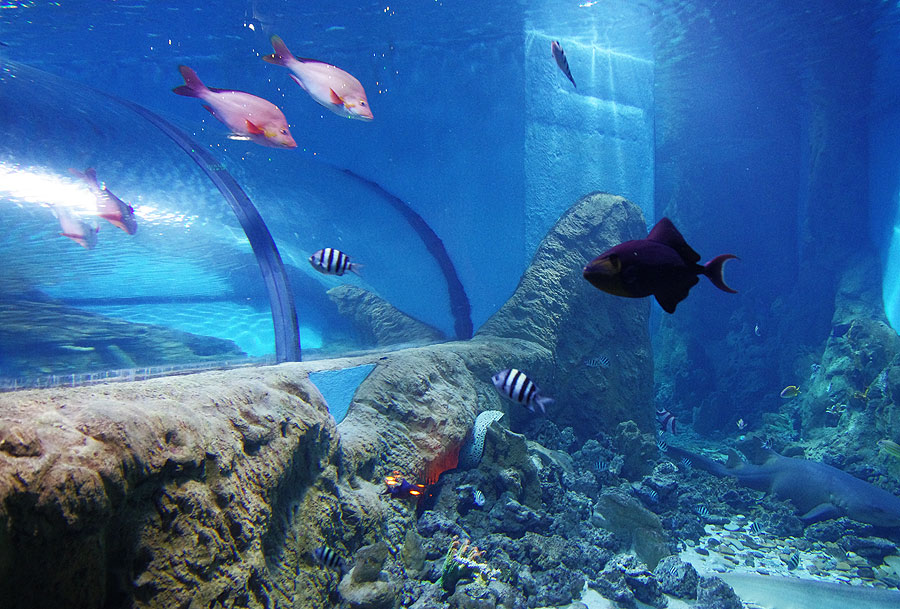
Through the largest acrylic window measuring 7 x 2.5 m visitors can watch a shark
feeding show. The pride of the fish collection from the Oceanarium “RIO” is Australian sharks, zebra, (about 2 m
long), napoleons (60 cm) and two nurse sharks, who came from the oceanarium “Planet-Neptune”. Australian pelagic
stingrays look remarkably.
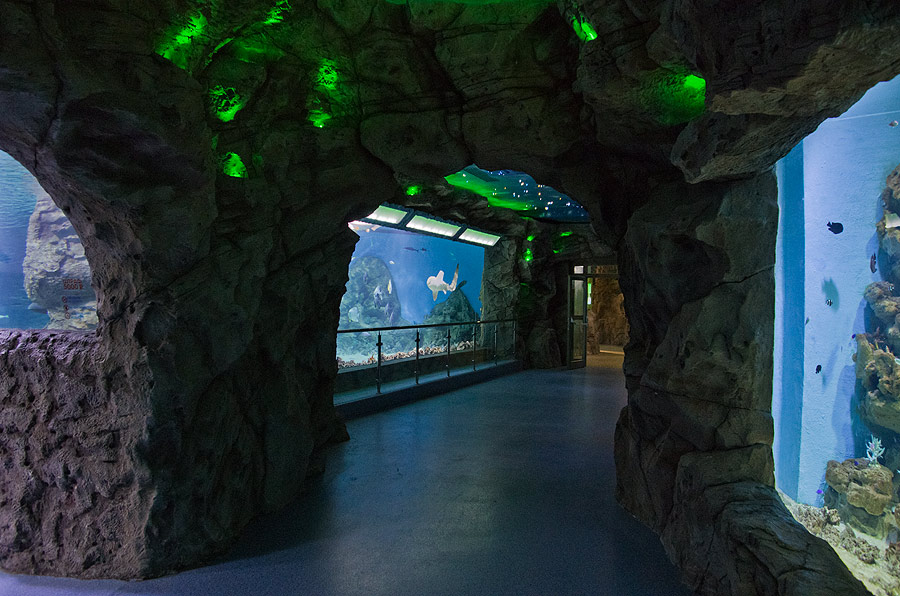
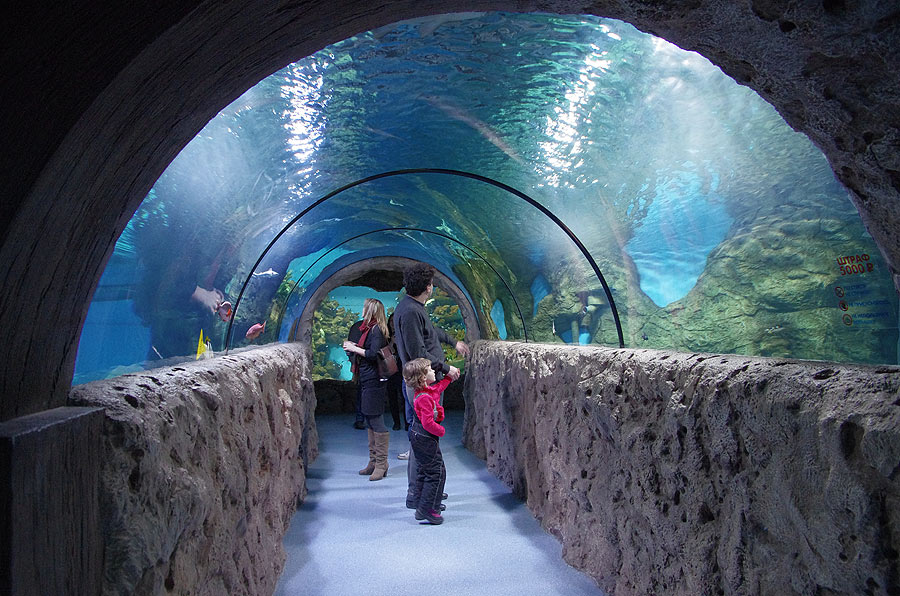
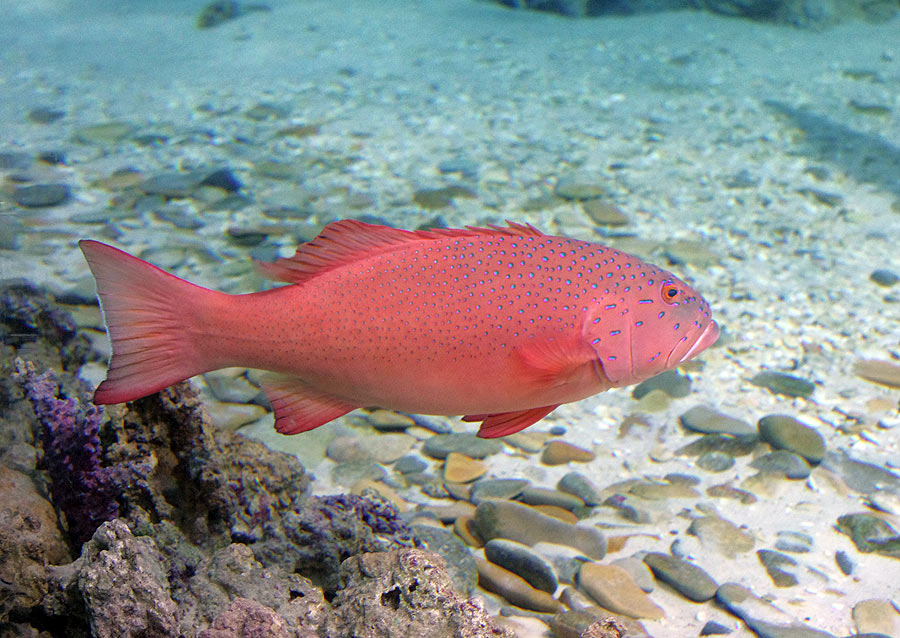
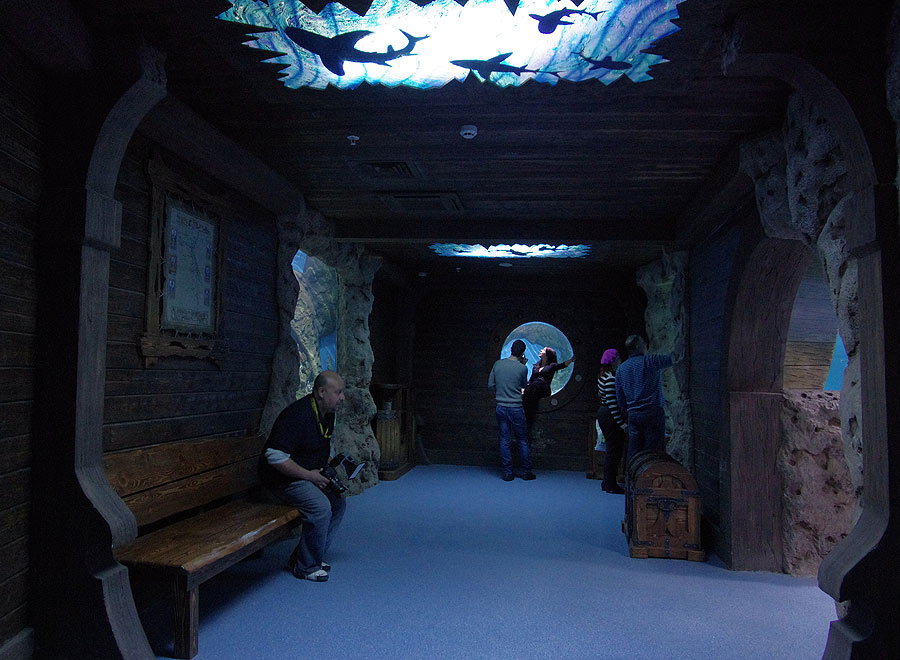
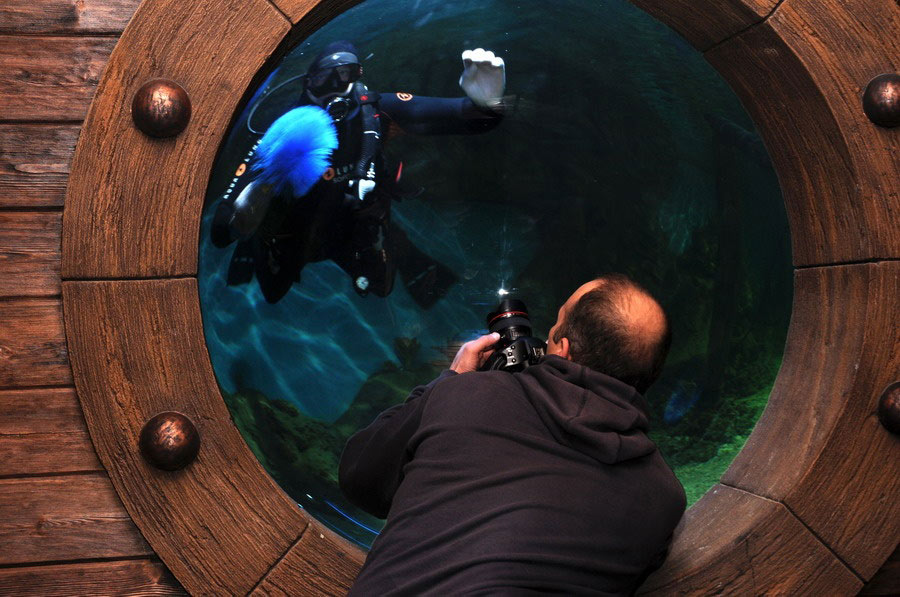
Among tunnels there is 8th exposition zone – “The hold of the pirate ship”. The
decoration of the tank is designed as “sunken ship”, in which “hold” visitors can see pirate cart, wooden barrel and
treasure chests. This is popular place to take photos and to be photographed. The “Ocean” zone also includes marine
20-cubes aquarium "Predatory marine tropical fish" with large morays from different species. The aquarium
is decorated as grotto of washed and weathered limestone.

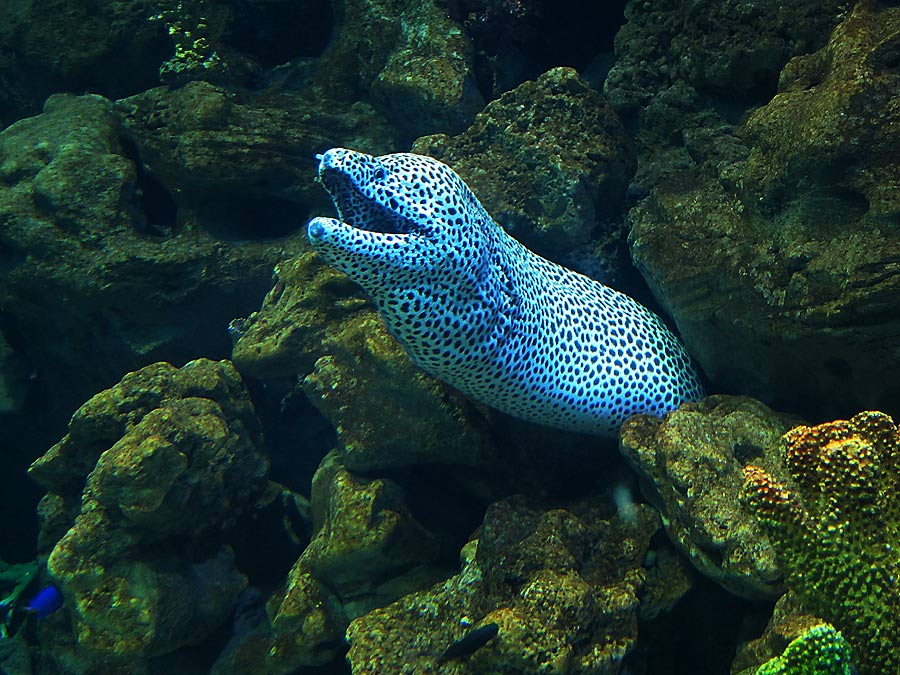
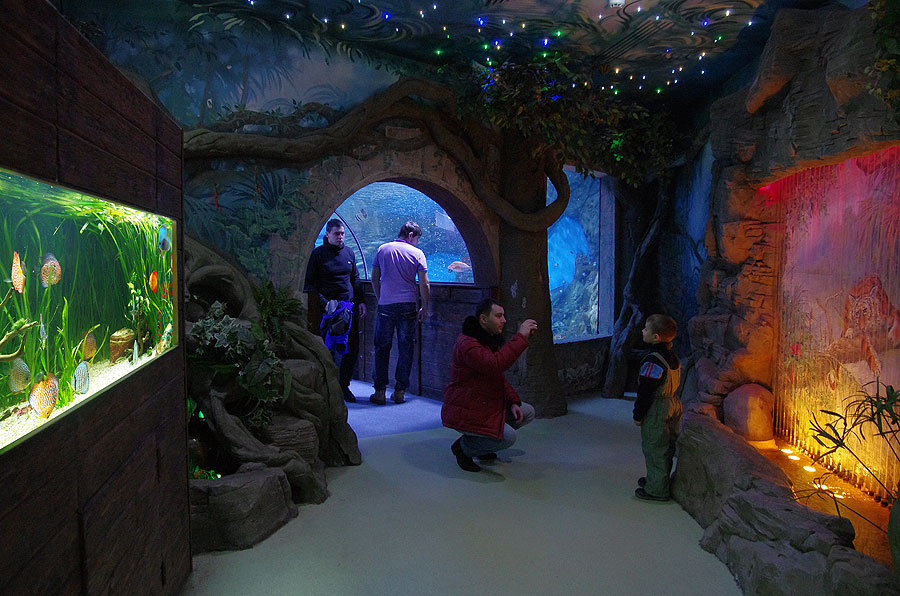
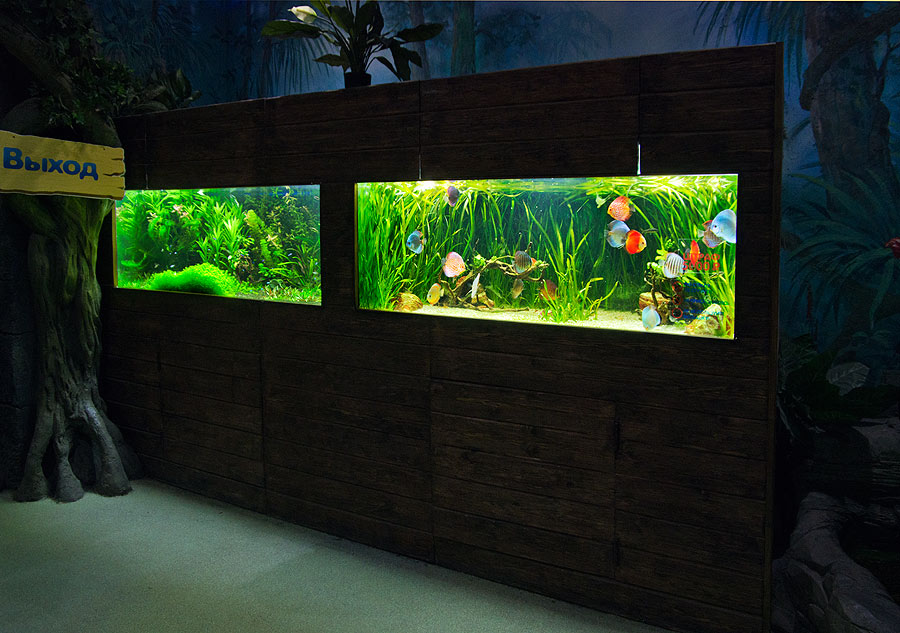
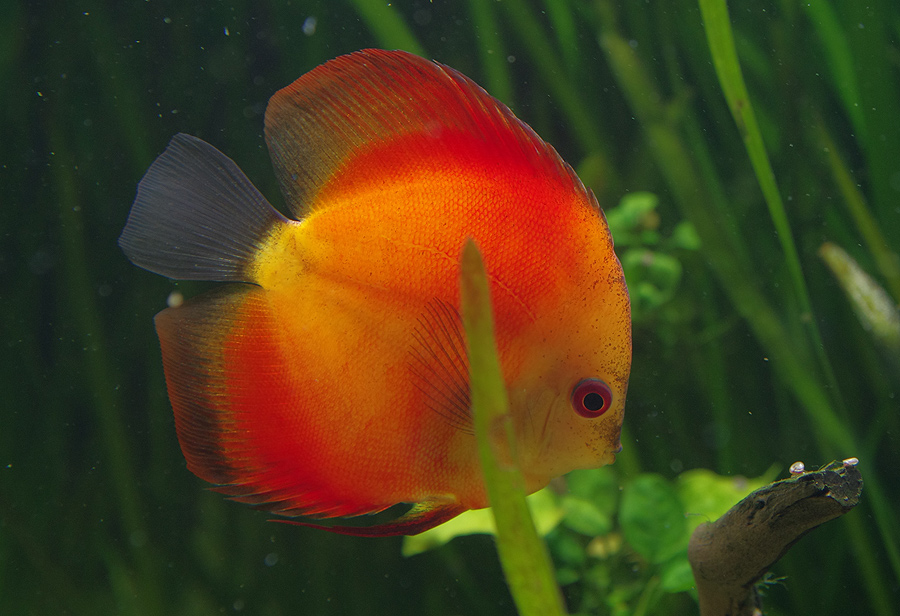
Going through the tunnel from the “Ocean” zone, visitors come to the last hall of the
exposition with decorative aquariums. There is also good place to take photos for memory. The “Tropics” zone (with
area of 30 square meters) completes the route of the oceanarium observation. There are two freshwater aquariums of
965 liters with live plants, discus and neons. The room is decorates with a waterfall along the threads and a rocky
waterfall.





